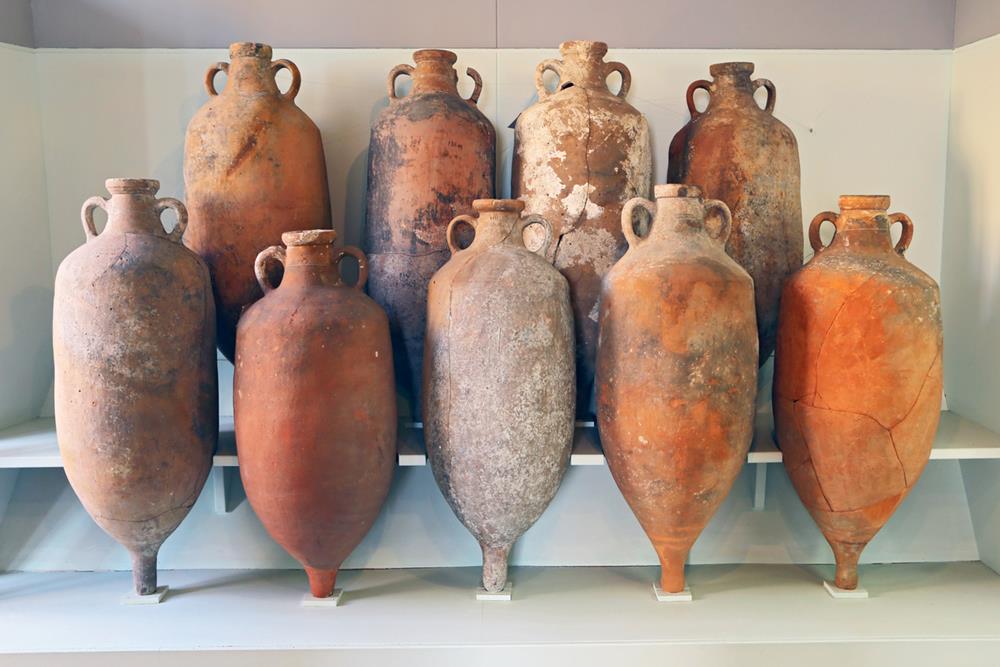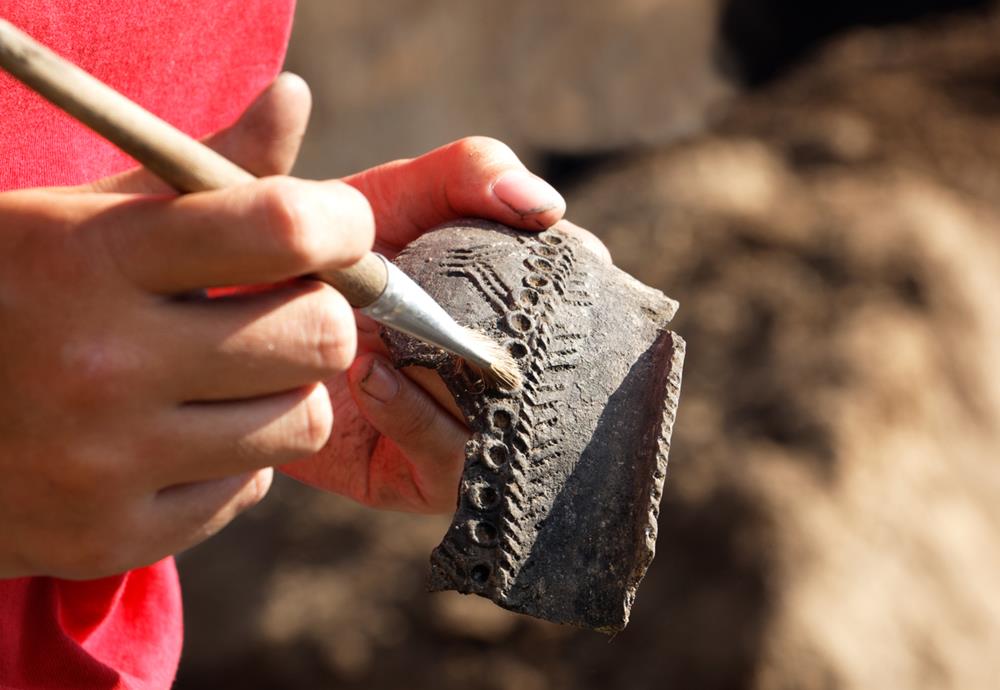Beer, more than being a drink, is a piece of history that people have enjoyed for thousands of years. There’s a special kind of science called beer archaeology that helps us dig up secrets about how ancient people made and used beer. Imagine being a detective, but instead of solving crimes, you’re finding out how our ancestors brewed their beer.
This article is all about uncovering those secrets. We’ll explore how scientists use old pots, writings, and even the leftovers from ancient beers to learn about the past. It’s a journey through time, showing us not just how beer was made but also its important role in different cultures. So, let’s dive into the fascinating world of beer archaeology and see what treasures we can find.
The Origins of Beer
The story of beer began thousands of years ago, tracing back to the earliest civilizations. It’s believed that the journey of beer started not with a deliberate invention but as a happy accident, possibly from grains left out in the rain, which then fermented. This serendipitous discovery would lead to the intentional brewing of beer, a practice that would spread and evolve across the globe.
Earliest Evidence of Beer Production
The earliest evidence of beer production takes us back to around 5,000 BCE or even earlier. Archaeologists have unearthed pottery in ancient Mesopotamia, now modern-day Iraq and Iran, with beer residue, suggesting that these early peoples were among the first brewers. Similarly, findings from ancient China show that beer-like beverages were being made from fermented rice, honey, and fruit as far back as 7,000 BCE.
- Ancient Mesopotamia: Pottery jars with residue from a beer made from barley, dating back to around 3,400 BCE.
- Ancient Egypt: Inscriptions and paintings in tombs depicting the brewing and consumption of beer, dating as far back as 2,500 BCE.
- Ancient China: Evidence of a mixed fermented beverage made from rice, honey, and fruit found in pottery vessels dating back to around 7,000 BCE.
Discovering Ancient Brewing Practices
Understanding how ancient people brewed their beer involves detective work using modern science and technology. Here’s how ancient brewing practices have been discovered:
- Residue Analysis: By analyzing the residue on ancient pottery, scientists can identify traces of the ingredients used in brewing. This method has revealed the types of grains and other components used in ancient beers.
- Ancient Texts and Records: Written records, such as the Hymn to Ninkasi (a beer goddess in Sumerian mythology), offer detailed descriptions of brewing processes and ingredients. These texts provide valuable insights into the cultural importance of beer and how it was made.
- Pictographs and Artwork: Images and carvings from ancient times often depict scenes of brewing and drinking beer. These visual records help researchers understand the equipment used in ancient brewing and the social contexts in which beer was consumed.
The discovery of ancient brewing practices through these methods has opened a window into the past, revealing not just how people made beer but also its significance in their daily lives and societies.
Techniques in Beer Archaeology
Beer archaeology combines various scientific techniques and disciplines to uncover the history of ancient brewing. This interdisciplinary approach not only helps researchers understand how beer was made in the past but also offers insights into the cultural, economic, and social aspects of its production and consumption. Here’s an overview of the key techniques used in beer archaeology.
Chemical Analysis
One of the primary methods for studying ancient brewing is chemical analysis of residue found on pottery, tools, and even in the ground where brewing might have taken place. This technique involves:
- Organic Residue Analysis: Scientists use chromatography and mass spectrometry to identify organic compounds present in residues. This can reveal the types of grains, fruits, or additives used in ancient beer recipes.
- Isotope Analysis: This method helps determine the types of water sources and agricultural practices used in brewing, offering clues about ancient environmental conditions and brewing technologies.
Archaeobotany
Archaeobotany or the study of ancient plant remains, plays a crucial role in understanding the ingredients used in ancient brewing. By examining seeds, pollen, and other plant materials found at archaeological sites, researchers can identify:
- The types of grains and fruits used in brewing.
- The domestication and cultivation practices of ancient societies.
- The geographic spread and trade of brewing ingredients.
Experimental Archaeology
Experimental archaeology involves recreating ancient brewing methods based on archaeological evidence. This hands-on approach allows researchers to:
- Test hypotheses about how ancient beers were brewed, fermented, and flavored.
- Understand the practical challenges and technical skills required in ancient brewing.
- Explore the tastes and textures of ancient beers, offering a direct sensory connection to the past.
Textual and Iconographic Analysis
Ancient texts, inscriptions, and artwork are invaluable resources for understanding the context in which beer was produced and consumed. This technique includes:
- Translating and interpreting ancient records that mention beer production, recipes, and rituals.
- Analyzing depictions of brewing and drinking scenes in art to understand the equipment used and the social settings of beer consumption.
Archaeological Excavations
Direct evidence of ancient brewing facilities, such as breweries and storage rooms, comes from archaeological excavations. Through careful excavation, researchers can uncover:
- The layout and design of ancient breweries.
- The tools and equipment used in brewing, such as fermenting vats and grinding stones.
- Spatial relationships that reveal the scale and organization of beer production.
These techniques, combined, paint a comprehensive picture of ancient brewing practices. Through the meticulous work of beer archaeologists, we can appreciate the complexity and diversity of ancient brewing traditions and their significance in human history.
Ancient Brewing Ingredients and Processes
The art of brewing beer in ancient times was both innovative and diverse, with different civilizations using a variety of ingredients and processes to create their unique versions of this beloved beverage. Understanding these ancient brewing practices offers a fascinating glimpse into the resourcefulness and cultural significance of beer in early societies.
Key Ingredients in Ancient Brewing
Ancient brewers utilized a wide range of ingredients, many of which are still common in brewing today, while others reflect the unique flora and agricultural practices of their time.
- Grains: Barley was the most commonly used grain in ancient Mesopotamia and Egypt, but other civilizations used wheat, millet, and rice. The choice of grain often depended on the region’s agriculture.
- Fermentables: Besides grains, ancient brewers sometimes added other fermentable substances to their brews, such as honey in China and fruit juices in various regions, to add different flavors and increase the alcohol content.
- Water: Clean, fresh water was crucial for brewing, just as it is today. Ancient texts and archaeological findings indicate that sourcing and storing clean water was a significant concern for brewers.
- Yeast: Unlike modern brewers who can use commercial yeast strains, ancient brewers relied on wild yeast in the air or reused sediment from previous batches to ferment their brews.
- Flavorings: Evidence suggests that ancient brewers used a variety of herbs, spices, and even medicinal plants to flavor their beers. These could include anything from local herbs to precious imported spices, depending on the region and the brewer’s status.
Brewing Processes in the Ancient World
The brewing process in ancient times, though varied from one civilization to another, generally followed a basic pattern that is recognizable to modern homebrewers, albeit with some unique twists.
- Malting: Grains were soaked in water to germinate, then dried or roasted to halt germination. This process converted the grains’ starches into fermentable sugars. Evidence of malting comes from both archaeological remains and ancient texts.
- Mashing: The malted grains were mixed with water and sometimes heated to further break down the starches into sugars. The exact methods and temperatures likely varied, but the principle was similar to today’s mashing process.
- Fermentation: The sweet liquid, or wort, from mashing was then left to ferment. In many cases, the fermentation vessels were buried underground to maintain a consistent temperature. The lack of knowledge about yeast meant that fermentation seemed almost magical to ancient brewers.
- Flavoring and Aging: After fermentation, the beer might be flavored with various additives and left to age. The aging process could last from a few days to several months, depending on the desired outcome.
The brewing processes of ancient civilizations were deeply intertwined with their agricultural cycles, religious practices, and social structures. The diversity of ingredients and techniques reflects the adaptability and creativity of ancient brewers in using available resources to produce beer. This ancient craft laid the foundation for the wide variety of beers enjoyed around the world today.
Challenges in Beer Archaeology
Beer archaeology provides a fascinating window into the past, offering insights into the daily lives, cultures, and innovations of ancient civilizations. However, this field faces unique challenges that researchers must navigate to uncover the history of ancient brewing practices accurately. These obstacles range from the degradation of organic materials over time to interpreting the evidence without imposing modern biases.
Degradation of Organic Materials
One of the primary challenges in beer archaeology is the inherent nature of the materials involved. Organic matter, such as grains and yeast, decomposes over time, leaving behind limited physical evidence of brewing activities. While pottery and brewing equipment can survive for millennia, the organic residues that indicate the use of these artifacts in brewing processes can be much harder to analyze due to degradation.
- Preservation Conditions: The preservation of organic residues depends heavily on the environmental conditions of the archaeological site. Humidity, temperature, soil pH, and microbial activity all play roles in either the preservation or destruction of organic evidence.
- Chemical Analysis Limitations: Advanced techniques like gas chromatography-mass spectrometry (GC-MS) can identify trace organic compounds in pottery shards. However, these methods have their limits, especially when the residues have been heavily degraded or contaminated over time.
Interpreting Fragmentary Evidence
Another challenge is the fragmentary nature of the archaeological record. Rarely do researchers find complete brewing facilities or fully intact brewing recipes from ancient times. Instead, they must piece together the brewing process from disparate sources of evidence, each providing only a part of the story.
- Combining Evidence: Archaeologists often rely on a combination of residue analysis, ancient texts, iconography, and even experimental archaeology to reconstruct ancient brewing practices. This multidisciplinary approach helps fill in the gaps but also introduces complexity in interpretation.
- Speculation and Bias: Interpreting fragmentary evidence requires a degree of speculation, which can be influenced by the researchers’ biases and assumptions. Distinguishing between factual evidence and interpretation is crucial for an accurate understanding of ancient brewing.
Cultural Context and Continuity
Understanding the cultural context in which ancient beer was brewed poses its own set of challenges. Beer often played a significant role in religious rituals, social gatherings, and economic activities, but the nuances of these roles can be difficult to discern from archaeological evidence alone.
- Changing Practices: Brewing practices and the social significance of beer likely evolved over time, even within the same culture. Deciphering these changes without written records can be challenging.
- Loss of Indigenous Knowledge: In some cases, the traditional knowledge of brewing practices has been lost over time, especially in cultures that were colonized or underwent significant social changes. This loss complicates efforts to understand the historical and cultural significance of beer.
Despite these challenges, beer archaeology continues to advance, driven by improvements in scientific techniques, interdisciplinary collaboration, and a growing interest in the cultural heritage of brewing. Each discovery adds to our understanding of ancient societies and the complex role that beer has played throughout human history.
Conclusion
Digging into the past to uncover the secrets of ancient beer is like going on a time-traveling adventure. Beer archaeology faces challenges, like figuring out clues from old materials and making sense of broken pieces of history. But every discovery helps us learn more about how people long ago lived, celebrated, and maybe even how they brewed beer, just like we do today.
It’s a journey that connects us with our ancestors over a shared love of this timeless beverage. As we keep exploring, we’re sure to find more fascinating stories hidden in the remnants of the ancient world, reminding us that beer has always been more than just a drink—it’s a part of our human story.





